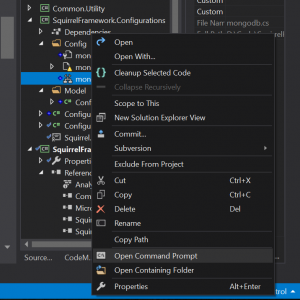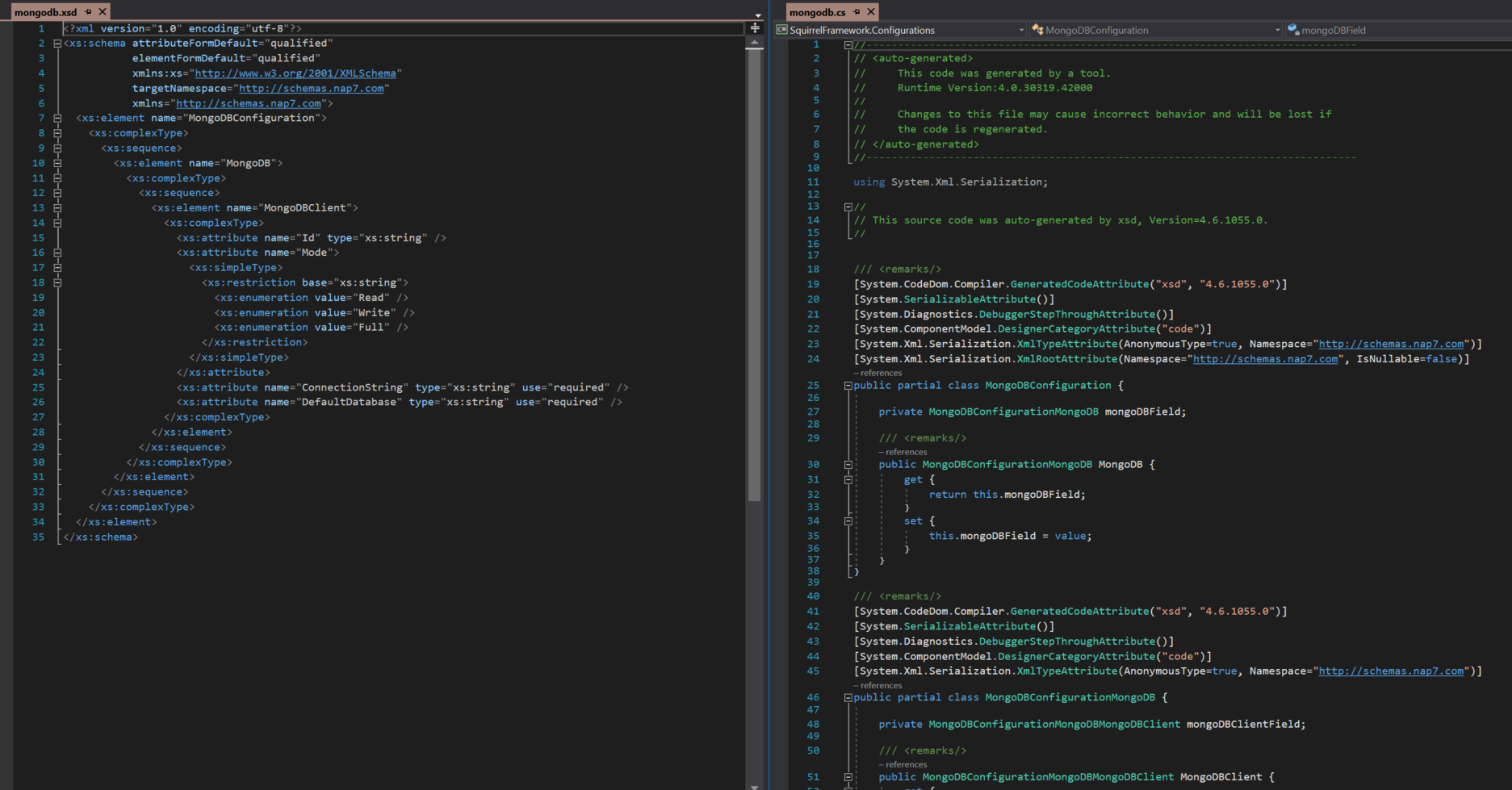当我们将一些配置数据存储在 XML 文档中,或希望自定义某种 XML 格式的文档时,最好先去定义 XML 对应的 XSD 规范。定义 XSD 后,我们不仅可以在 VS 等 IDE 中对相应的 XML 文件的语法进行自动检查或属性匹配,同时也可以自动生成对应的实体类,简化 XML 的创建、修改以及读取。
打开 VS,在 XSD 文件上点击鼠标右键,点选 Open Command Prompt
然后在命令行中输入 xsd abc.xsd /classes ,随后就会在当前目录生成对应的 C# 类了,如果需要 VB 语言版本,追加 /language:vb 参数即可。(Tips: 键入 explorer . 就可以在 Windows Explorer 查看当前的目录)
左侧是 XSD 定义,右侧是自动生成的 C# 类。
我们可以编写一个简单的类,来完成实体对象和 XML 文件的读取与存储。
namespace SquirrelFramework.Configurations
{
#region using directives
using System.IO;
using System.Xml.Serialization;
#endregion using directives
public class XmlManager<TXmlModel>
{
public string XmlFilePath { get; }
public bool IsEnableFileWatcher { get; private set; }
private XmlSerializer serializer;
private FileSystemWatcher fileWatcher;
public XmlManager(string xmlFilePath, bool isEnableFileWatcher = false)
{
this.XmlFilePath = xmlFilePath;
this.serializer = new XmlSerializer(typeof(TXmlModel));
this.IsEnableFileWatcher = isEnableFileWatcher;
}
public TXmlModel GetModel()
{
using (var stream = new FileStream(this.XmlFilePath, FileMode.OpenOrCreate, FileAccess.Read))
{
return (TXmlModel)this.serializer.Deserialize(stream);
}
}
public void SaveModel(TXmlModel model)
{
using (var stream = new FileStream(this.XmlFilePath, FileMode.OpenOrCreate, FileAccess.Write))
{
this.serializer.Serialize(stream, model);
}
}
public void EnableFileWatcher(FileSystemEventHandler fileSystemEventHandler)
{
if (this.fileWatcher != null)
{
this.fileWatcher.Dispose();
}
this.IsEnableFileWatcher = true;
this.fileWatcher = new FileSystemWatcher
{
Path = Path.GetDirectoryName(this.XmlFilePath),
IncludeSubdirectories = false,
Filter = Path.GetFileName(this.XmlFilePath),
//Filter = "*.config"
EnableRaisingEvents = this.IsEnableFileWatcher
};
this.fileWatcher.Changed += fileSystemEventHandler;
}
public void DisableFileWatcher()
{
if (this.fileWatcher != null)
{
this.fileWatcher.Dispose();
}
this.IsEnableFileWatcher = false;
}
}
}
这样,在使用 XML 存储配置时,就可以对一个对象直接进行操作了,非常便捷,如果需要学习 XSD 的一些语法,可以阅读这篇教程。


